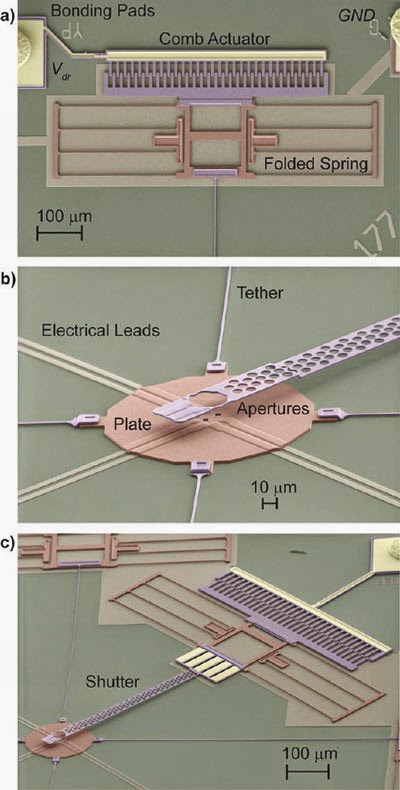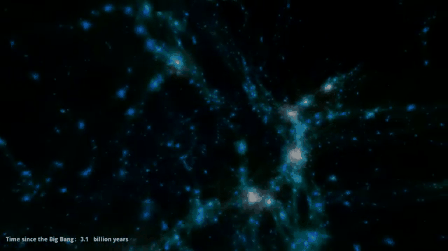I wrote this short story for an anthology. Happily, it was turned down, because now it's going to be the free introduction to my character and the longer story (dare I think novel?) that I'm working on right now.
So, I'm going to share the whole story with you. I hope you like it.
Bitter Blood
Copyright 2014 Ruth de Jauregui
Bitter made her way past the flashing blue and red lights, past yellow tape. She didn’t show her badge to the hovering blues; they knew who she was.
A smudge of brownish red marred the grey cement as she stopped to put plastic booties over her shoes. She grimaced at the staid practicality. There was a time she’d have worn high heels, forensics be damned. Now her knees protested as she ascended the steps, and heels? Heels were impossible.
The officer at the door did stop her. “Detective, I don’t think you….”
Bitter stared him down as his words faltered and trailed away like the long years since she’d joined the force. He stepped out of the way.
The carpet squished ominously as she picked her way past the overturned sofa and stepped into the kitchenette. He was sprawled across the floor under the open window. Death’s indignities softened the limp muscles; the body was face, well, chest down. Jagged skin ripped across the remains of his neck. She didn’t think he was a young man, but it was hard to tell―his head was gone. A quick glance revealed that his fingers were also missing. Judging by the torn remnants of his khaki pants, he was probably missing other parts as well.
“Prints?” Despite the wide pool of blood congealing on the tile and splattered on the wall, Bitter’s voice was dispassionate, detached from the scene.
One of the techs glanced up at her. Sweat darkened the edges of his mask, though the night was cool. “No, none yet.”
“Identifying marks?”
He pointed silently at the faded tattoo on a bare shoulder, barely visible under the spattered blood.
Bitter glanced, then stepped forward, nearly treading in the blood. Emergency lights flashed through the window, alternately painting her face blue and red, as she paled. She swallowed and the tech looked up at her face.
“Are you all right?” His voice was puzzled. She’d seen worse during the drug wars. A headless man was nothing new or unusual in this city.
She stepped back and turned away, hiding her face. “No,” she choked out. She took a deep breath as she dodged past the sofa, out the door and rumbled down the stairs. She paused at the bottom.
“Bitter?”
“Call the Chief. He needs someone else from Homicide. Here. Now.” Her voice was urgent.
The tone in her voice drew the attention of the blues. Conversation stopped as they turned toward her. She took a few more steps and turned, leaning against her car, hands over her face.
The blues parted like the Red Sea as Sgt O’Malley emerged from the darkness of the alley. He looked around and suddenly all were busy with notebooks and crowd control.
“Bitter?”
She looked up at him, tears shining in her eyes, reflecting the blue, red, blue flashing lights.
His voice softened, but he didn’t reach out to her. He knew better. “Bitter?”
She shook her head and turned away, shuddering. She looked up at the darkening moon, drifting behind the black clouds as a single tear streaked down her carefully rouged cheek.
“It’s my ex.”
O’Malley opened his mouth and paused as Bitter turned back toward him, fists clenched, her face twisted in rage. Furiously, she swept away the tear, smudging her makeup, as she began pacing beside the car.
“Why would that fool come back here? What would make him come here, of all places, and finally get himself killed? Lord knows he dodged enough bullets here.”
O’Malley winced. A few of those bullets were his.
Bitter stopped pacing and glared at the blood dripping down the stairs as she stripped the plastic booties off her shoes.
“OK. Until the Chief sends another detective, you know the drill. Coroner, forensics, take witness statements, run a list of suspects. Lots of pictures―I want every inch of that flat and the body photographed before anything is moved. And you and I are at the top of the list of suspects, don’t leave anyone out and don’t touch any of the evidence yourself. Get one of the blues to bag it and tag it.” She turned abruptly toward the alley. “Did you find anything in there?”
“Only ghosts.”
Bitter looked back at him, her chocolate eyes black in the dim light.
“You don’t have to believe me, you know.” A trace of Irish lilt touched his voice, then faded back into his normal rich baritone.
Bitter shook her head, “Yeah, yeah, I know, you’re the sixth generation of seventh sons so you don’t have the full Sight, but you can see ghosts. Whatever. Speaking of, did you see his head? It’s not near the body.”
“No. And his ghost wouldna’ be speaking to me anyway. There’s no love lost between us and death wouldna’ change that.” His voice was bitter and unforgiving.
Bitter choked down a shred of sympathy. It was, after all, O’Malley’s wife who’d been foolish enough to be caught with Sal on his last escapade before the divorce. Yet, O’Malley stayed with her because he was Catholic or something. At least she kept her twitchy tail home now. Bitter shrugged it off―old news and not her problem―especially not tonight.
“Let’s take another look at that alley. Fire escape?” She looked around for a blue uniform. “Sapp!”
“Yo!”
“Sapp, grab some gloves and evidence bags. We need you to document the evidence―if we find anything.”
She saw the side-eye to O’Malley, but ignored it.
The rain arrived just ahead of the coroner. Fat drops splattered across the windshield as he peered through the smeared glass. Bitter changed direction, the two cops trailing her.
“One. Upstairs. And Joe, I think it’s my ex.”
He tipped his head sideways and frowned, his face pallid under the yellow glare of the streetlights. Bitter waited impatiently.
Finally, he shook his balding head. “It’s not your ex.”
“But…”
“He has hands, right?
Taken aback, Bitter nodded.
He nodded back, firmly, “Then it can’t be Sal. He’s dead. Drug deal gone bad. His body never surfaced after his main competition tossed him into the river. Knocked him in the head and cut off his hands to prevent identification if the body floated to the surface.” He peered through thick bifocals at Bitter’s face. “Vice found the hands in the perp’s freezer six months or so later during a raid. I got enough of a thumbprint to positively identify him. Nasty stuff.” He shook his head and turned toward the stairs.
Fists clenched, Bitter turned to O’Malley.
“It wasn’t me, Bitter.” He protested, “The man nearly destroyed your career after he fed you those shrooms, when he was trying to kill you. Then you were in the midst of the divorce and on leave, taking care of your mother. So the Chief ordered us to keep it quiet. And when you got back, we had that serial murder case and, well, no one thought…” His voice trailed away under her disbelieving glare.
Bitter closed her eyes and gathered her rage, stuffing it into the black abyss where she stored her emotions. Time for that later.
Both men stepped back when she opened her eyes, but she just pointed with her chin. “Alley.”
The flashlights lit one item at a time, casting deep shadows behind the dumpsters and trash piled in bricked up doorways as they cautiously dodged broken bricks and bottles. O’Malley stopped and breathed deeply, looking at a particularly dark shadow beside a spilled trash can.
“Ghosts?” Bitter’s voice conveyed her disbelief even as she asked the question.
He took another deep breath. “Maybe. It’s barely here now. They fade, you know. They’re just shadows left behind, not the soul.”
Bitter didn’t know. She only tolerated his obsession with ghosts.
A dripping spot caught Sapp’s attention as he looked up the fire escape. “Y’all see that?” He reached up to touch it before Bitter knocked his hand away.
“It’s slime. Put on your gloves, take a picture and then a sample.” She kept her flashlight on the viscous smear. She had to take a deep breath to steady her voice before she continued. “Sal specialized in exotic hallucinogens. Like imported botanicals, mushrooms, amphibian skins and slimes. Trust me, you don’t want to touch it.”
“Strange.” O’Malley muttered as he looked around the alley, flashing a light into darkened corners.
“What?”
“Where’s the homeless people? There’s usually at least a half dozen back behind that dumpster, huddled with their dogs and shopping carts inside that old doorway; sheltered from the rain and wind.”
“Scared away by the action?” Bitter asked.
Sapp glanced behind the dumpster. “Naw, old Mumbles never moves for anything. He’s so far gone that he wouldn’t notice a cop if one stepped on him.” Sapp paused as he sealed the evidence bag, “He used to trip on acid and angel dust, but later he got into meth. Last time I saw him, he was going on about tunnels and giant lizards or alligators or something.”
O’Malley chuckled, “Giant lizards? Well, now.”
Bitter didn’t laugh. She trained the flashlight into the doorway, where a darker shadow led into the building. “Maybe they just found a better place to shelter from the weather.”
She bent to peer inside, then jumped back when she looked down. A few more glistening spots, and a wide, weaving line of slime surrounded by several tiny trails led into a deep hole in the old building’s floor. A filthy rag fluttered below, caught on a brick that was just out of reach.
O’Malley flashed his light into the hole, carefully avoiding the slime and the crumbling bricks around the edges. “Hey, there’s water down there. What do you think of that?”
“I think we have a problem, O’Malley. The underground city is right below us and I suspect that water is an old cistern or well, left over from the Gold Rush era. The river connects with the passages when the ground water rises high enough. Anything could be down there.”
Sapp shook his head. “Like what, Bitter?”
Bitter sighed. “Anything. The Gold Rush era brought men from all over the world to California, and this is where it all started, here on the American River. They all brought their own cultures and vices, everything was sold here, from opium to prostitution to, to,” she stopped for a moment, “to their favorite foods…”
“And ghosts.” O’Malley said firmly. “There’s ghosts down there too. I’ve seen them many a time, shadows hiding in corners during the summer tours.”
“I wasn’t thinking of ghosts.” She said sternly, looking down at the light reflecting onto the walls from the rippling water below. Something glittered beside the round hole, but when she followed the movement with the flashlight, it was already gone, fleeing into the deeper shadows below street level.
“Both of you, come on. I’m not climbing into that hole. There’s stairs two blocks over that lead into the underground city.”
Before they left the alley, Bitter looked long and hard at the open window above. A few dark smears stained the windowsill. They looked suspiciously like blood, but the rain was quickly turning them into dribbles of pink as they dripped down the old brick walls.
The crowd of spectators had grown, with a few posturing for the news cameras. Bitter groaned and slipped behind the taller officers, trying to avoid the reporters. Luckily, the cameras were facing away from the alley as the handsome men and women gestured toward the bloody steps, excitedly repeating any rumor that fluttered past their eager ears.
“Sapp?”
“Yo.”
“Can you pull up the Internet on that fancy phone of yours?”
He pulled the phone from his pocket and hit a few buttons. “What do you need to know?”
“Bitter! Wait!”
Reluctantly, she turned but breathed a sigh of relief when she saw the coroner hurrying toward her. “What’s up, Joe?”
He looked furtively behind him, at the cameras. Bitter took his arm and tugged. “Come on, let’s keep moving so they don’t notice us.”
“Bitter, there’s something wrong with that body.”
“More than just a missing head, fingers and a few other parts?”
“No, no, it’s not that. The hands aren’t right.”
“What do you mean, the hands aren’t right? What’s wrong with his hands?”
“This is not to be discussed,” he looked sternly at O’Malley and Sapp. They nodded silently in agreement.
“The texture of the skin changes at the wrists. Also, the palms are a little too small in relation to the size of the body. It’s, it’s as if there’s another person’s hands attached to the arms.”
“Like they were grafted on?”
“No, no, there’s no visible scars. I’ll go over this carefully at the morgue when we do the autopsy. I want to run some tests. But there’s something weird about this whole murder.” He held up a hand before anyone could respond. “Yes, more than missing body parts. I have a bad feeling about this, Bitter. You be careful. Your father would come back to haunt me if I didn’t warn you that there’s more to this than it appears.”
“Tell me about it.” Bitter snorted.
He scurried back to the van as the EMTs carried the body bag out on a stretcher.
The blaze of cameras and flashing lights were blinding as Bitter turned away, shielding her eyes to protect her night vision. The trio slipped around the corner into the shadowed downtown streets, where layers of graffiti obscured the plywood that covered long-broken windows. The drenching rain dropped like a waterfall from sky to street to sewers far below.
“Down here,” whispered Bitter, unlocking a metal door and leading them down a rotting staircase. “No loud noises and keep the flashlights on the ground, so you can see where you’re putting your feet. There’s debris and holes in the floor.”
“Say Bitter, you wanted me to look something up online?”
“Later, Sapp. No time now.”
Picking her way over the uneven floor, Bitter led them deeper into the maze of tunnels beneath the city. The stench of decaying wood and mold grew stronger as they followed another staircase down to a moisture-laden passage. Water trickled over the stone and brick walls and crumbling mortar. Bitter stopped when the tunnel divided again. She looked right, then left. Biting her lip, she flashed the light quickly down each passage before she turned right. Abruptly, she stopped and dug into her pocket for a small tube. Quickly she drew an arrow on the wall, pointing back the way they’d come.
“Lipstick?” O’Malley whispered.
She rolled her eyes, nodded, and put it back in her pocket. Motioning them forward, she slowed the pace as patches of slime appeared on the walls. Odd rumbles echoed from somewhere ahead. Three service revolvers cleared the holsters at the sound. Adrenaline, dark passages and an unknown murderer ahead will make any cop paranoid.
A loose stone turned under Bitter’s foot, but Sapp caught her arm before she fell. She gave him a tight smile and limped on, her knee throbbing in rhythm with her pounding heart.
A sign peeled from the wall beside them, the faded Chinese characters nearly obscured by black mold and dirt. As Bitter paused, a small dark shadow passed in front of them. O’Malley hissed at Bitter. He pointed with his chin and frowned at the faint, blurred figure that trembled in his flashlight’s glare. Bitter raised her eyebrows questioningly; she couldn’t see the shade. He pulled one eyelid into a squint with a finger. It took a minute before she realized what he was saying.
“Chinese?” her lips shaped the word. He nodded.
She nodded back grimly. They were getting close.
A few steps more and a wide doorway opened on the left. The wooden door lay in rotting ruins, covered with more slime. It led into a storefront that had lain empty since the heyday of the 49ers. Today the air was dank, rolling out of the hole and warning of stagnant water.
“It’s here.” O’Malley said in a bare whisper. “He’s pushing me away.”
Bitter motioned him back to silence, but a clatter of falling bricks and a grumbling growl drifted from inside the old store. Two 9mm and a .45 Glock pointed steadily at the doorway as they backed away, up the tunnel. Another brick clattered and then a third as something heavy moved in the dark. Slowly a huge, greenish brown head appeared. Slime dripped from the thing’s skin, oozing down the wrinkles of its blunt snout. A long, wide body carried by four short, webbed feet followed, with one claw dragging a scrap of khaki that occasionally caught on a rock or brick. It matched the pants on the body three floors above.
It raised its ugly nose, smelling the air currents as it looked for the intruders. The tiny eyes were unblinking as three flashlights centered on the amphibian. Bitter backed up and stumbled again on the uneven floor. Its head swung toward the noise. Miniature versions of the slimy creature swarmed around and under the giant, working their way up the tunnel in a slow-moving wave.
“Look at that,” muttered Sapp as he continued backing up, “it’s at least 10 feet long.”
“Twelve,” said Bitter softly, “and we’d better move a little faster, the babies are faster than the adults.
“What the hell is it?”
Bitter’s lips twisted in a grimace. “I was going to have you look it up. The Chinese consider it a delicacy, but I never thought they’d have brought a breeding pair over here.” Her eyes narrowed. “Unless the legends of giant salamanders in the rivers are true, and an imported one mated with a native…”
“That?”
“I told you that Sal specialized in exotic hallucinogens. That looks like a Chinese giant salamander―except it’s way too big. They’re usually only six or eight feet long. But I suspect that the slime mixed with brandy makes an excellent high for the jaded druggie with money to burn.”
The great head swung back toward the tunnel as it crawled ponderously forward. Bitter took another step back and stepped on another loose brick, losing her balance and falling backward onto her butt. She was already scrambling backward as she shouted, “Don’t…”
O’Malley fired as the salamander swiftly lunged forward, snapping at Bitter’s legs. The shots slammed the giant amphibian back, but the little ones flowed forward, wide mouths snatching at each other and at Bitter’s sturdy shoes.
Sapp and O’Malley grabbed Bitter’s arms and jerked her to her feet. They turned and ran back up the tunnel, stumbling over debris as they dashed away from the salamander’s nest.
Bitter was puffing hard as they climbed back up the last set of stairs and burst back through the doorway, out into the raging storm.
“Nobody’s ever going to believe this,” gasped Sapp, as he leaned against the wall.
“No, they aren’t,” said Bitter, “and you aren’t going to say anything either.”
O’Malley looked at her sharply. “We aren’t going to say anything?”
“Nope. The damn things are endangered in China, and if you killed the largest specimen ever seen…”
“But, they’re eating people.”
Bitter smiled, bitterly. “Maybe. We haven’t heard of any missing homeless. They could’ve migrated to the shelters. Or moved to San Francisco. It’s been a long, cold, wet winter. And maybe it’s just a certain person who was stupid enough to disturb the creatures. Or lure them by feeding them from his kitchen window so he could harvest the slime.” She paused, then continued slowly, “And I’m not too sure that it ate his head.”
Sapp sputtered, “But you’re talking like that body was really Sal. You heard the coroner. Sal’s dead!”
“Is he? They never found his body.”
O’Malley spat to the side. “You think he…”
“Sal liked to experiment with drugs. Even on himself.” Bitter smiled cynically. “Salamanders can regrow missing limbs. You probably didn’t kill the mother but it should take her a while to regenerate the damaged tissues. And they’re both carnivores and cannibals. Don’t be surprised if the body is missing tomorrow.”
O’Malley opened his mouth, then closed it again.
Bitter continued, “No, I don’t know. I don’t know anything for sure. Even if he did survive being tossed into the river 10 years ago, I think Sal’s done for this time. At least, I don’t think Sal’s body can grow a new head. But then again, we didn’t find his head, now did we?”
As Bitter relocked the door and pocketed her set of master keys, O’Malley and Sapp looked at each other. O’Malley shook his head slightly and Sapp dropped a bare nod. Bitter knew that by morning, they’d start rationalizing the whole confrontation. By nightfall, they’d deny they’d ever seen a salamander under downtown Sacramento.
The cameras and crowds were thinning as the trio made their way back to the crime scene. Yellow police tape flapped in the rising wind, one end torn loose by a gust as the storm intensified. Lightning and thunder crashed together over the old house, adjoining narrow alley, and remaining police cars. Only one marked car’s lights were still alternating red and blue, eerily synchronized with the wild white flashes from the towering clouds above.
Favoring her right knee, Bitter walked stiffly back to her sedan, leaving the two men to write the report. She would review it tomorrow―and delete any parts that’d bring the psychologist sniffing around, ready to make his case for mass hallucination instead of accepting the cold, hard facts as they stood. She’d had enough of his poking and prodding and incessant questioning about the hallucinations she'd suffered 11 years ago, after Sal poisoned her, and she wasn’t going to listen to the doctor's nasal voice droning on and on.
She’d never tolerate it again.
----------
Slowly, Bitter limped up the wet steps of her tidy midtown bungalow. Her knees still ached, complaining about their abuse tonight and warning of more rain to come. The lock stuck, like it usually did in damp weather, but she patiently worked the key until the door finally opened. Carefully, she took off her suit and hung it neatly in the entry, where the cat couldn’t shed on it, and put on her favorite robe. She made a mental note to drop her dry cleaning off in the morning and to recommend O'Malley for sensitivity training. Ayyy, using a finger to make a slant eye. Really? She rolled her eyes in disbelief.
Shaking her damp hair out of what remained of the tight bun, she poured a glass of wine before hobbling down the hall.
She paused in front of the family portraits and raised her glass, saluting the man that cheerfully greeted her every day, her black hair matching his tight curls, unruly despite his neatly clipped cut.
“Papá, you were right. If I could raise that cold-blooded bastard from the dead, I’d kill him again.”
Black shadows gathered in the dark corners of the house as she plodded into the bathroom. She didn’t see the golden glint growing in her father’s eyes, nor the shadow that slid from his portrait to the front door, ready for another night of guarding his beloved child―Juanita Bitter.
A few facts:
http://www.arkive.org/chinese-giant-salamander/andrias-davidianus/
http://www.unknownexplorers.com/giantsalamander.php
http://www.livescience.com/34513-how-salamanders-regenerate-lost-limbs.html
http://books.google.com/books?id=WTnEi4xgoNsC&pg=PT18&lpg=PT18&dq=copper+toxic+to+salamander&source=bl&ots=TWR1BUplEY&sig=_UHHQ4eksTTWwE4r-CMCpy3KGi8&hl=en&sa=X&ei=HYQrU9nsDNPeoAS4nYKADg&ved=0CCcQ6AEwAA#v=onepage&q=copper%20toxic%20to%20salamander&f=false


















